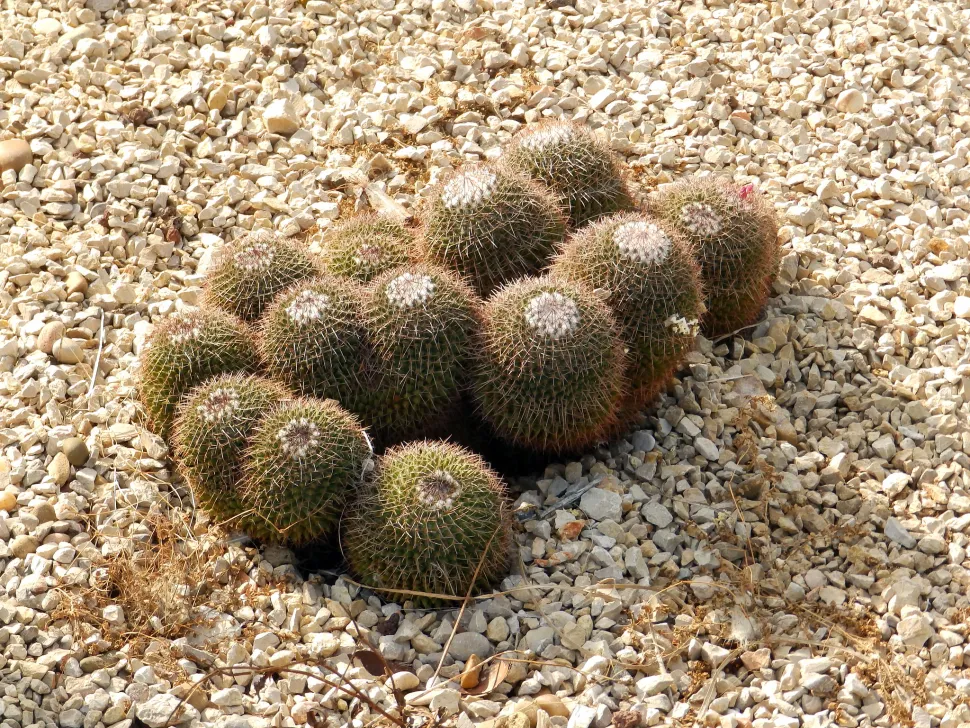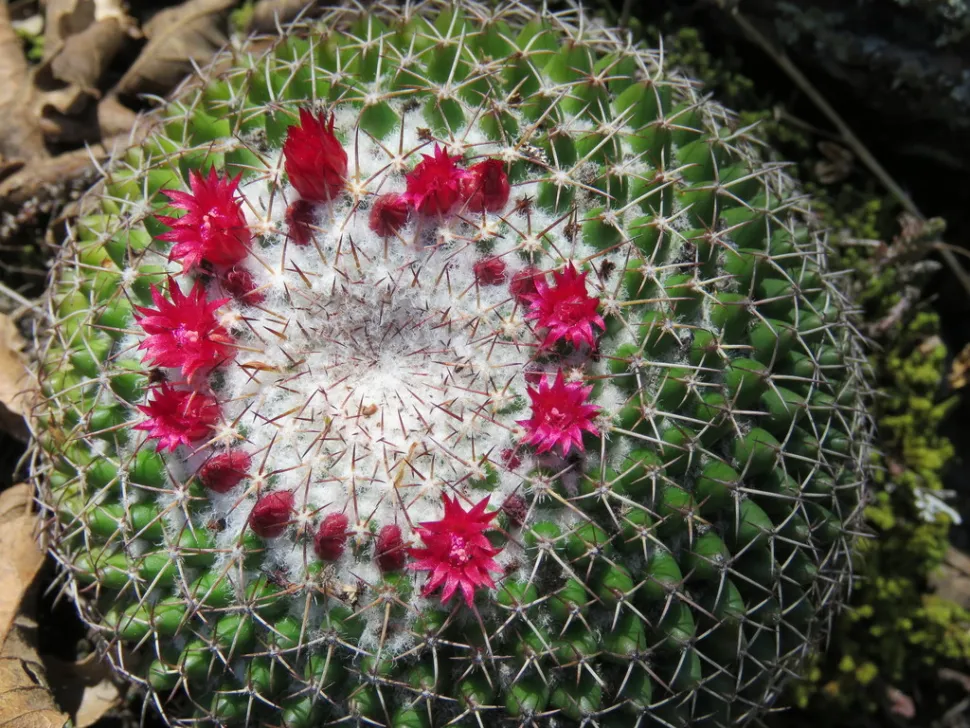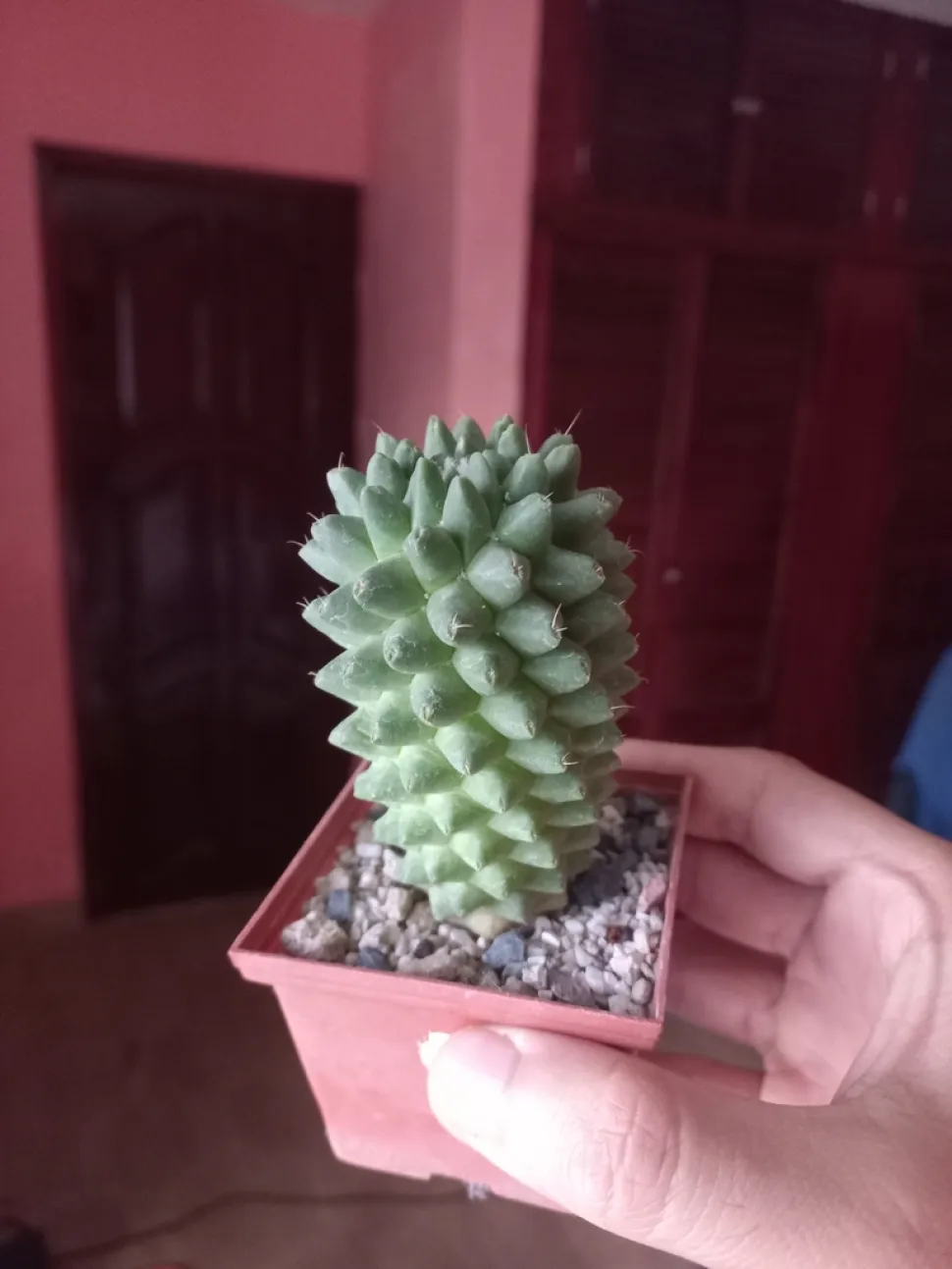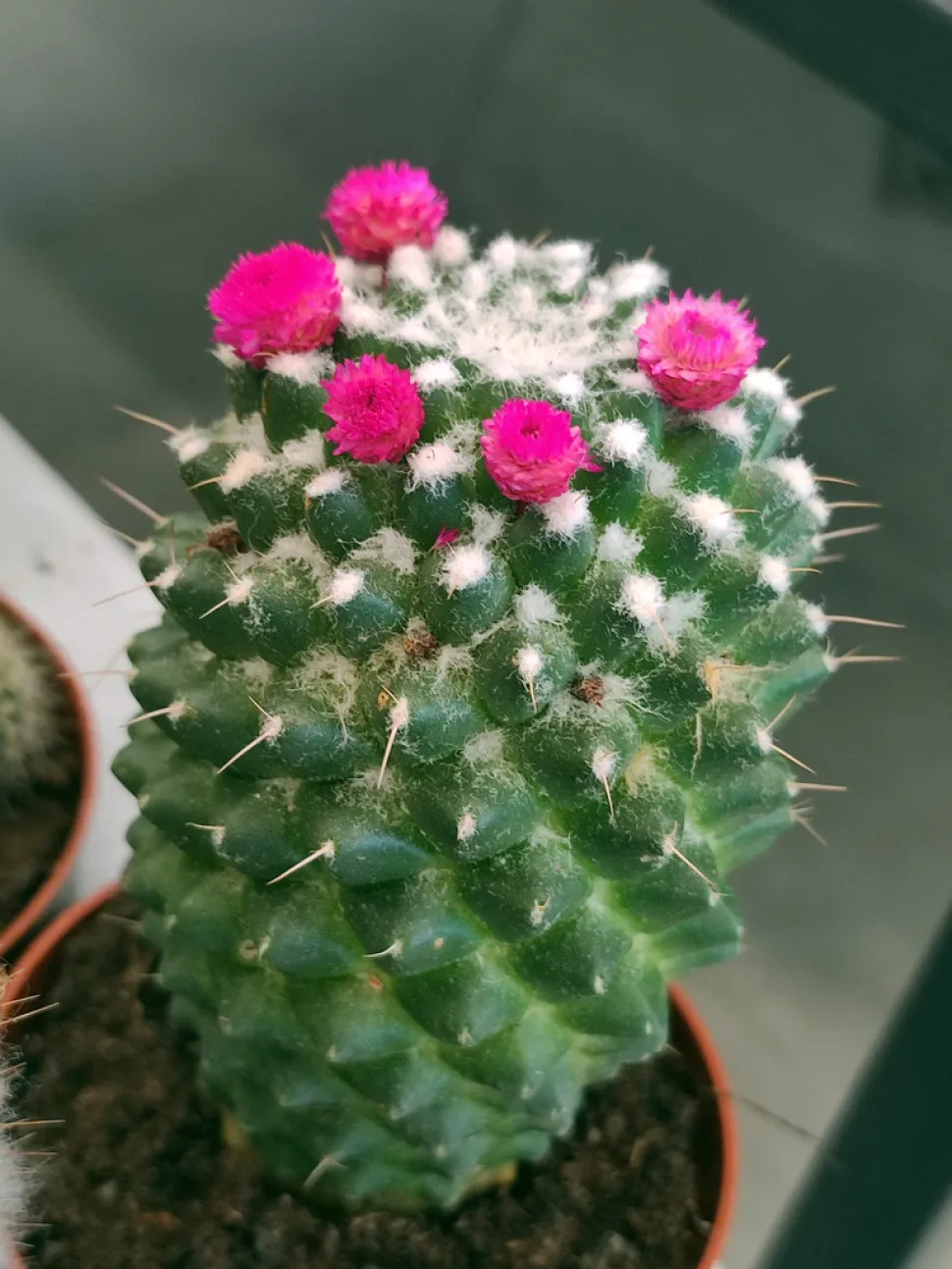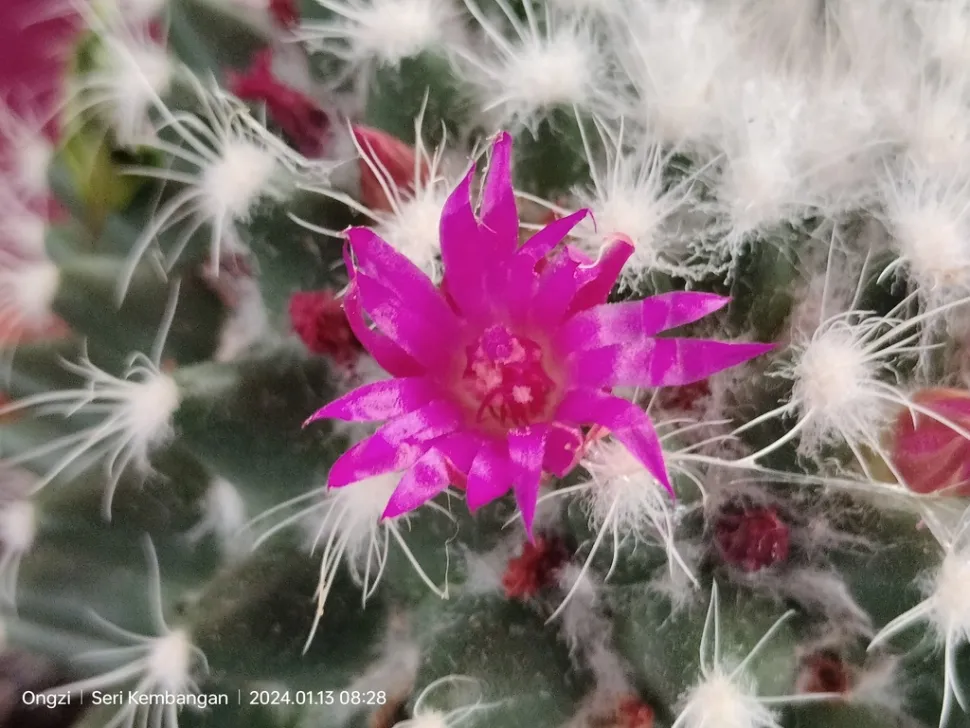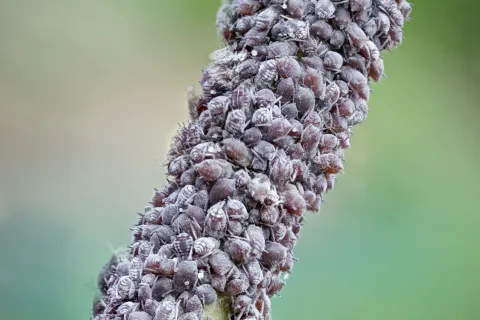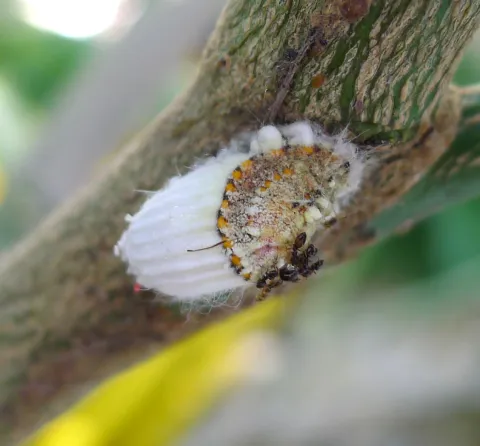Mammillaria polythele, a cactus with or without spines
Thorns help cacti to capture moisture and defend themselves against predators. But some varieties have decided to do without them. For example, Mammillaria polythele, a species native to Mexico, comes in prickly and non-prickly versions.
How to recognize the Mammillaria polythele?
A solitary cactus, Mammillaria polythele grows to 30 cm in height and 12 cm in diameter.
The thick, globular stem is covered with conical, bluish-green nipples. In some varieties, these protrusions bear two to four yellow or brown prickles at the top. They may also be connected by white bristles. However, there are also Mammillaria polythele without spines and completely hairless, such as Mammillaria polythele forma nuda.
Flowering takes place in spring. Bright pink flowers crown the main stem. They follow one another for several weeks and, when pollinated, produce fleshy berries.
Like mammillaria elongata, Mammillaria polythele is non-toxic. If your plant has no thorns, it poses no danger. However, if you're repotting a specimen with prickles, remember to put on gloves to protect yourself.
Our maintenance tips
Your plant needs watering in winter only when the temperature is above 18°C. If it spends the off-season outdoors or in an unheated greenhouse, you can stop watering between November and March.
Watering
Potted plants need regular watering. However, to avoid root rot, allow the substrate to dry out between waterings.
You can use mains water. If it's hard, use reclaimed rainwater instead.
Don't forget to remove any stagnant water from the dish.
Spray
Your mammillaria polythele hates wet foliage. You must not mist the plant.
Repotting
Every spring, repot your Mammillaria polythele to give it more space.
Obtain a pierced pot one size larger than the previous one.
Fill the bottom with a very light, draining substrate such as commercially available potting soil for cacti and succulents. Plant your Mammillaria polythele in the center and add potting soil. Stop a few centimetres below the rim of the pot to form a watering trough.
Tamp down and wait three or four days for the soil to dry before watering.
Fertilization
To promote the growth of your Mammillaria polythele, apply fertilizer in spring and summer.
Apply a cactus and succulent fertilizer to support growth. Be sure to follow the manufacturer's recommended dosage to avoid damaging the foliage.
Plantation
When the risk of frost has passed, it's time to plant.
Your Mammillaria polythele fears humidity. Plant it in a place where water doesn't stagnate, at the top of a slope, an embankment or in a rockery, for example.
Dig a hole slightly larger than the root ball. You can place pebbles or clay balls at the bottom to improve drainage. Then lay down a layer of substrate. If your soil is light and chalky, you can use garden soil. If your soil is rich and heavy, use potting soil for cacti and succulents.
Plant your Mammillaria polythele and fill in with garden soil or substrate. Water to remove air bubbles and encourage rooting.
Seedling
Your seedlings need warmth. Summer is the best time to get started.
Fill a perforated pot with potting soil for cacti and succulents. You can also mix horticultural potting soil for seedlings (two-thirds) with gravel or sand (one-third). Water the soil to keep it moist, but not soggy.
Place your seeds on the substrate. If they're very small, you don't need to cover them with soil.
Seedlings take better if they 're stifled. Place your pot in a mini greenhouse or cover them with a transparent plastic bag. Your seeds also need heat to grow. You can use a heating mat to maintain a temperature of between 23 and 27°C. Place the cuttings in semi-shade.
Open your greenhouse for a few minutes a day and spray the substrate to keep it moist.
Cutting
Cutting is carried out during the strong growth phase, generally in spring and early summer.
After a few years, your Mammillaria polythele produces shoots. You can divide them to multiply the plant.
Once the plant has been dug up, separate one of the shoots, with its roots. Beware of thorns! Remember to wear gloves when handling your Mammillaria polythele.
Pour a well-draining substrate into a perforated pot. Potting soil for cacti and succulents, for example.
Plant your Mammillaria polythele in the center and tamp it down.
Diseases / Threats
Information
| Family | Cactaceae - Cactaceae |
| Type | Mamillaria - Mammillaria |
| Species | Mammillaria polythele - Mammillaria polythele |
| Lifecycle | Perennial |
| Foliage | Evergreen |
| Exposure | |
| Substrat | |
| Planting methods |
Open ground In pots In tubs |
| Categories | |
| Tags |
Beginner Flowery Small pot |
| Origin |
Central America |
| Hardiness (USDA) | 10a |
| Leaf color |
|
| Flower color |
|
Discover plants from the same family
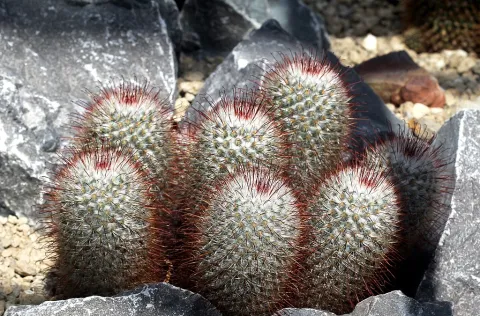
Mammillaria bombycina
Discover

Mammillaria zeilmanniana
Discover
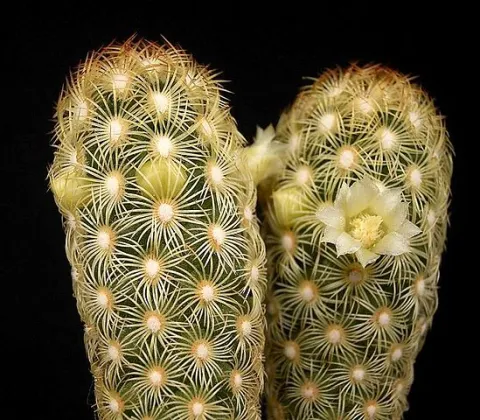
Mammillaria elongata
Discover
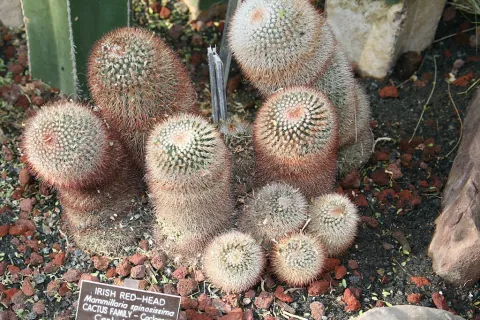
Mammillaria spinosissima
Discover
